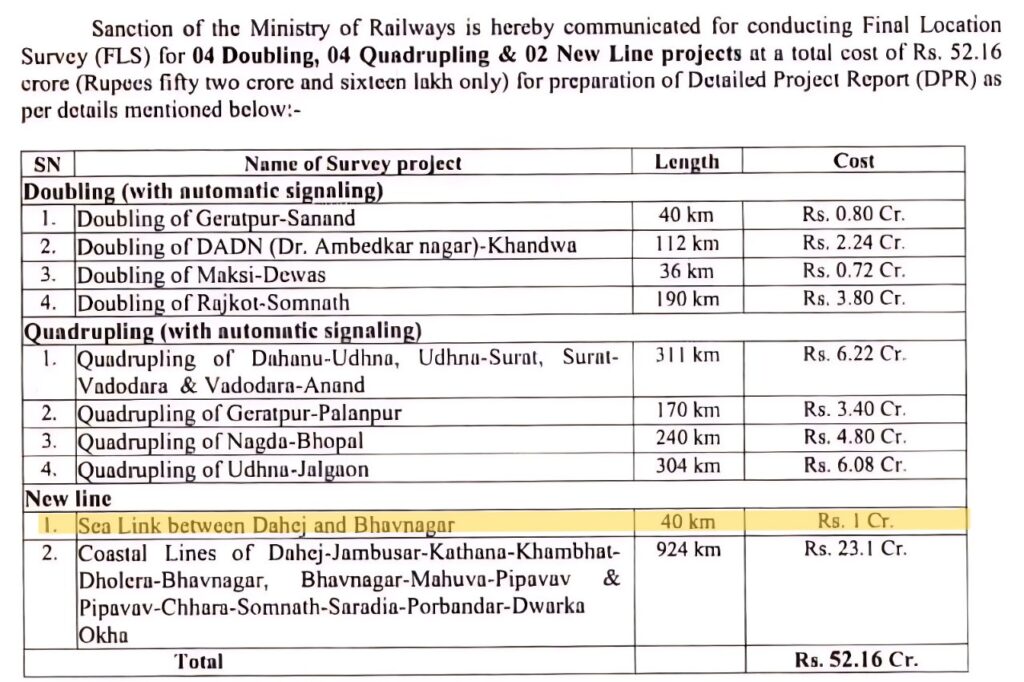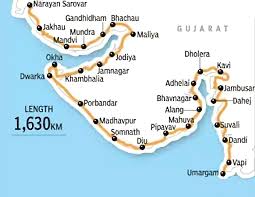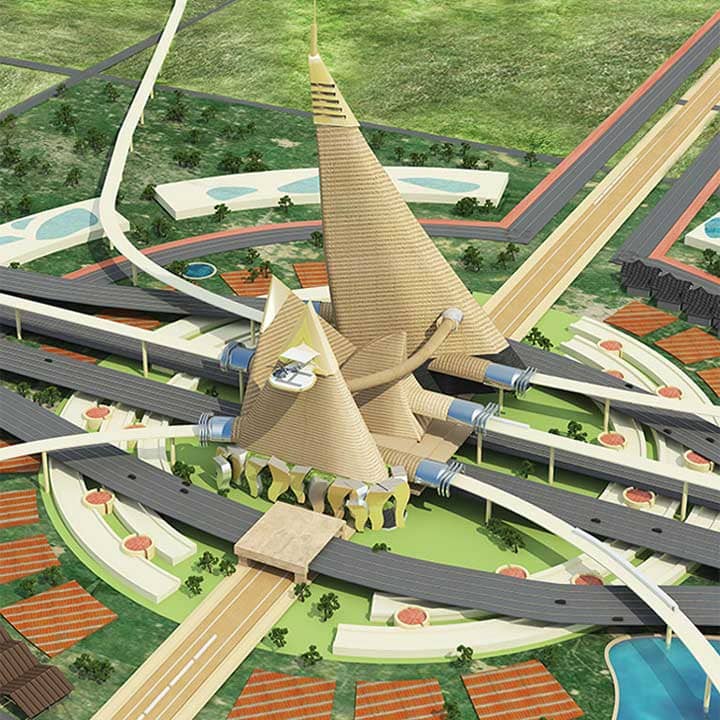Introduction
The Indian Railways has initiated plans for a 924-kilometer coastal railway line along Gujarat’s coastline, aiming to enhance connectivity, boost economic growth, and promote tourism. The Ministry of Railways has sanctioned ₹23 crore for conducting Final Location Surveys (FLS) and preparing Detailed Project Reports (DPRs) for this project. The proposed railway line is divided into three segments: Dahej-Jambusar-Kathana-Khambhat-Dholera-Bhavnagar, Bhavnagar-Mahuva-Pipavav, and Pipavav-Chhara-Somnath-Sardiya-Porbandar-Dwarka-Okha. This initiative is expected to strengthen trade by connecting major ports and enhance tourism by improving access to cultural and historical sites along the coast.
Transforming Gujarat’s Coastline: The Ambitious 924-Kilometer Coastal Railway Project
The Indian Railways has taken a monumental step towards transforming the transportation landscape of Gujarat by planning a 924-kilometer coastal railway line. This visionary project aims to improve connectivity along the state’s extensive coastline, drive economic progress, and elevate Gujarat’s tourism potential to new heights. With ₹23 crore sanctioned by the Ministry of Railways for conducting Final Location Surveys (FLS) and preparing Detailed Project Reports (DPRs), the foundation for this transformative journey has been laid.
Breaking Down the Route: Strategic Segments for Maximum Impact
The project, carefully divided into three segments, seeks to connect critical coastal regions while catering to economic and tourist demands.
- Dahej to Bhavnagar via Jambusar, Kathana, Khambhat, and Dholera: This first segment emphasizes linking industrial hubs like Dahej, known for its port and Special Economic Zone, with Bhavnagar, an important city on the Gulf of Khambhat. Intermediate stops such as Jambusar, Khambhat, and Dholera are equally significant, with Dholera being the site of Gujarat’s ambitious smart city project.
- Bhavnagar to Pipavav through Mahuva: This section connects Bhavnagar to Pipavav, which hosts a key port in Gujarat. By bridging these areas, the railway line is expected to boost access to maritime trade routes and strengthen the region’s logistical network.
- Pipavav to Okha via Chhara, Somnath, Sardiya, Porbandar, and Dwarka: This is where the magic of tourism unfolds. The line links iconic destinations like Somnath, a revered pilgrimage spot; Dwarka, known for its mythological and cultural importance; and Porbandar, the birthplace of Mahatma Gandhi. Each stop has its own historical, cultural, or economic significance, making this section a potential goldmine for boosting both domestic and international tourism.
Why This Project Matters: Unpacking Its Significance
The coastal railway line is not just about laying tracks—it’s about creating a ripple effect across Gujarat’s economy, connectivity, and culture.
- Economic Advancement: Ports like Dahej and Pipavav are already pivotal for Gujarat’s thriving export-import industry. This railway project is set to enhance their capacity by providing seamless transport options for goods. Reduced transportation costs and improved logistics will make Gujarat more attractive to investors, particularly in port-led industries and manufacturing sectors.
- Tourism on the Fast Track: Gujarat’s coastline is home to some of the most visited tourist spots in the state. Destinations like Somnath and Dwarka already draw pilgrims and tourists alike. The new railway line will make these places more accessible, thus increasing footfall, spurring local business growth, and generating employment opportunities in the tourism sector.
- Bridging Communities: By connecting smaller towns and coastal cities, the project aims to integrate regional markets and communities, making it easier for people to commute and goods to be transported. This network will foster stronger social and economic ties within the state.
Investing in the Vision: Financial Overview
The ₹23 crore allocated for surveys and DPRs is just the tip of the iceberg when it comes to financial commitment. This initial funding ensures that the groundwork for the project—like determining exact routes, environmental assessments, and cost estimates—is meticulously planned. It’s worth noting that in the Union Budget for 2024-25, Gujarat received an unprecedented ₹8,743 crore for railway infrastructure, signaling the government’s strong focus on enhancing the state’s connectivity.
Current Progress: Laying the Groundwork
Presently, the project is in its survey phase. This phase involves conducting Final Location Surveys (FLS) and preparing Detailed Project Reports (DPRs). These steps are crucial as they help determine the railway line’s alignment, assess environmental and social impacts, and provide a detailed blueprint for construction. This careful planning stage will lay the foundation for subsequent phases like land acquisition, tendering, and construction.

Looking Ahead: Steps to Execution
Once the surveys and DPRs are completed, the project will enter its execution phase. This involves:
- Land Acquisition: Ensuring the required land is available for railway tracks.
- Tendering: Inviting bids from contractors and selecting the most efficient and cost-effective ones.
- Construction: The actual laying of tracks, building stations, and creating associated infrastructure.
This structured approach ensures that the project progresses smoothly and efficiently.
A Vision of Transformation
The 924-kilometer coastal railway line is more than just a transportation project; it is a vision that aims to transform Gujarat’s socioeconomic landscape. By strengthening connectivity, fostering economic growth, and boosting tourism, the project promises to bring tangible benefits to the people of Gujarat. It’s an investment in the state’s future, one that aligns with its ambitions of becoming a global economic and cultural hub.
Conclusion
As the wheels of this ambitious project begin to turn, Gujarat stands on the brink of a new era. The coastal railway line is not just an infrastructure development—it’s a promise of connectivity, growth, and prosperity. With the support of the government, the dedication of planners and engineers, and the dreams of the people, this transformative project will likely become a reality that reshapes the state’s future.



